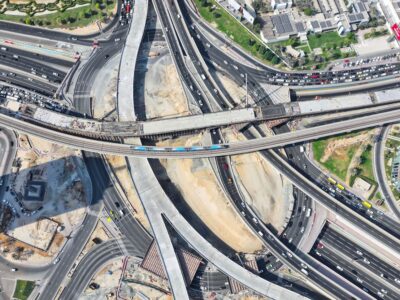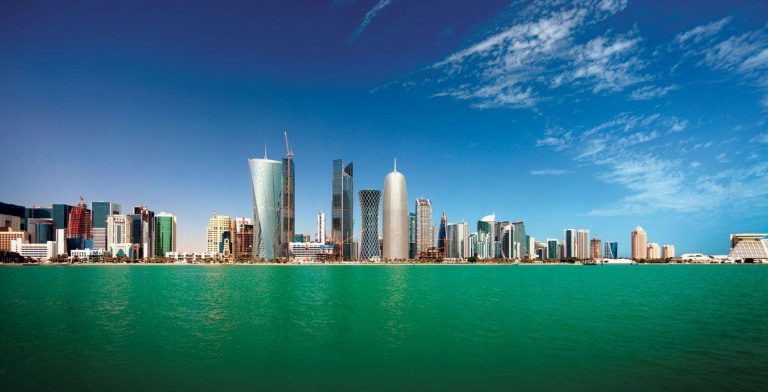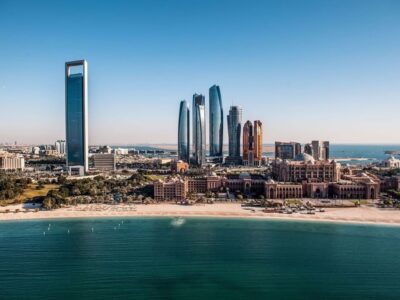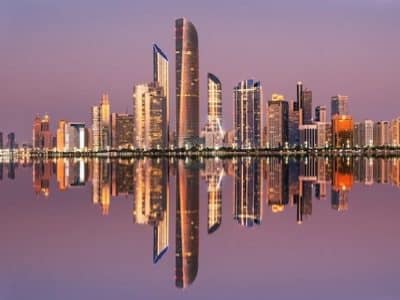After winning its bid to host the FIFA World Cup 2022, the State of Qatar has been propelled into the global limelight. Now the race is on for the country to perfect its transportation and logistics infrastructure in time to show the world what Qatar can really deliver. Determined no longer to be overshadowed in the global logistics arena by its neighbour Dubai, the government has taken up the challenge by channelling billions of dollars into redefining the State as one of the leading logistical hubs in the region.
With its prime geographical location in between trading continents, Qatar has always held the enormous potential as a global logistics hub. “The country’s peninsular geography allows for ports such as Ras Laffan, Mesaieed and Doha to offer significant competitive trade advantages, particularly for its exports of oil and gas,” says Srinath Manda, programme-manager for transportation & logistics practice at consultants Frost & Sullivan.
But this potential has remained unrealised, with Qatar’s woefully inefficient transport infrastructure seriously hampering the growth of the country’s logistics market. But all indicators now show that the country is poised for a logistics turnaround, driven by strong commitment from government as part of the Qatar National Vision 2030.
Last year, Qatar’s transportation and logistics market made around US$7545 million in revenue, registering an impressive climb of 16.5% from the previous year. By 2016, this market is expected to soar to over $11,930 million. “Qatar’s import dependence in several industries is expected to rise significantly to support the development in the country,” says Manda. “The development plan for the country, now in high gear, has resulted in a simultaneous boom in several sectors, which requires time and cost-efficient logistics to support the growth.”
According to Manda, the most important step in Qatar’s quest for logistics dominance lies in overcoming two major shortcomings: one being the lack of integrated multiple modes of transportation, and secondly, the poor supporting warehouse infrastructure. “Developing an integrated multimodal transportation infrastructure for the seamless flow of goods is essential,” he says. “We also need to see the development of world class warehousing zones, like Dubai’s Jafza, for Qatar to boost its logistics industry to global standards.”
On the upside, the substantial investment being channelled into both these areas shows that the Qatari government is seriously committed to addressing these concerns. With multimodal logistics and warehousing in mind, the first phase of Logistics Village Qatar (LVQ) was completed in April this year, with further expansions planned for 2014 and 2015. “The project provides a platform tailor-made to meet the specific needs of regional logistics players and large corporate houses,” says Abdulaziz Zeid Al-Taleb, managing director, board member and acting group CEO of Gulf Warehousing Company (GWC), the company tasked with setting up LVQ. “LVQ aims to eliminate transport and distribution costs and to integrate logistics along the supply chain,” he adds. “It also complements the national effort of moving trade to the global arena by offering a clear venue for all in-bound and out-bound logistics operations.”
As a globally-integrated logistics provider in its own right, Gulf Warehousing Company has been benefiting from the success that comes with a growing logistics industry. The first quarter of this year has seen the company’s profits jump 12.8% above last year’s. Furthermore, Al-Taleb is confident that the growth in professional logistics organisations in Qatar has seen some reversal of the traditional trend in big businesses to keep their logistics operations in-house. “As the country’s infrastructure and industry grows, we expect to see logistics procurement habits begin to mirror those in other countries such as the UAE’s average 25% of outsourced logistics or Europe’s 35-40%,” Al-Taleb predicts. “As a result, it has been estimated that the third-party logistics segment will grow to 15% of total logistics operations by 2016.”
Article continued on next page…
Much of Al-Taleb’s optimism for Qatar as a viable logistics hub goes back to the strong commitment to the industry shown by the government. “The premium Qatar has placed on infrastructure spending is no secret,” he says. “The country has shown that it means business and is determined to become a regional, industrial hub across all industry verticals. The logistics field has developed as the glue that holds these projects together, and as such has developed into a huge industry on its own.”
Oliver Cornock, regional editor for the Middle East at consultancy Oxford Business Group (OBG) agrees. Each year, the consultancy produces an annual report on Qatar and, based on individual indicators, Qatar consistently outperforms the MENA regions, and in some cases even global averages. “Costs are competitive – the price per container at the time our publication went to press was $730, compared to a MENA average of $1238,” says Cornock.
“Qatar also scored highly in the World Bank’s Logistics Performance Index in 2007, and improved in 2010, no doubt indicating the positive returns borne out of infrastructure investments.” The most recent report on Qatar highlights vast opportunities for the logistics industry, with at least $70 billion worth of domestic transport projects either under way or in the planning stages. “That’s an enormous amount of activity and investment,” says Cornock. “But this is essentially the infrastructure bedrock needed to underpin Qatar’s economy in a post-hydrocarbon future. This infrastructure is critical to its success and without it diversification will be much more difficult to achieve.”
Significant projects include investments of over $35 billion in rail and metro projects over the next 10 years, the expansion of the flag carrier Qatar Airway’s fleet, and the development of Doha International Airport. “These are clearly all part and parcel of the development being catalysed by the state-successful award of the 2022 FIFA World Cup football tournament,” he says. The knock-on effect of this investment will benefit not only passengers, but also the logistics and freight sector.
The enormous success of Qatar Airways as a commercial airline has been mirrored by that of its cargo segment. “Qatar Airways Cargo has played a crucial role in establishing Qatar as a logistics hub,” says Urich Ogiermann, chief officer for cargo at the airline. “The air cargo industry serves as a key engine of economic growth and development as it supports trade and investment, improves connectivity, and promotes efficiency and competitiveness.”
The upcoming $1 billion Qatar Cargo Complex at Hamad International Airport (HIA) promises to boost this growth even further. “HIA will enable the air cargo industry to grow exponentially by having the facility to handle large volumes of cargo,” explains Ogiermann. The new complex, covering an area of more than 290,000m2, will handle 1.4 million tonnes of cargo annually; this is more than triple the capacity of the existing facility. Made up of seven facilities, the complex will house one of the largest cargo terminal buildings in the world, with an air cargo handling system capable of accommodating 1005 Unit Load Devices (ULD) and 5286 consignment cages.
As well as air transportation, Qatar has been investing heavily in the development of a new rail network to ensure smooth, multi-modal supply chains. “Efficient supply chains are a vital part of developing the sort of diversified economy Qatar is looking to build, and essential in terms of getting construction materials and industrial raw materials in and out,” says Cornock. “The fact that the state is spending some $41.8 billion on railways over the coming decade is welcome news for those involved in the logistics sector specifically.”
Article continued on next page…
Eventually the plan is for the domestic network to be linked into the broader GCC regional network, which presents very exciting opportunities, as well as some practical challenges. “Perhaps the seriousness with which Qatar is viewing rail is reflected in the fact that the country’s investment in metros, trams and the like accounts for nearly a third of the $149 billion total the GCC plans to spend on such projects in the next 10 years,” emphasises Cornock. Phase one of Qatar’s high speed and freight rail projects includes the 195km freight line linking Port Mesaieed to Ras Laffan. The remaining phases include the construction of a high-speed connection to Bahrain and the network linking Dukhan to Al-Shamal and Doha City.
Qatar’s poor road infrastructure has also been receiving a muchwelcomed facelift. The country’s Public Works Authority (Ashfhal) has been calling for bids from contractors to build the Orbital Highway on the outskirts of Doha as part of the government’s plans to upgrade the country’s roads and draining infrastructure over the next five years.
“Efficient road transport infrastructure is critical for both the effective functioning of the economy and for competent business flow, especially as Qatar is experiencing massive economic and industrial growth,” says Nour Suliman, chief executive officer, DHL Express Middle East and North Africa.
“Constant investment in the transport infrastructure will help facilitate the shipping of goods from and to the Middle East and improve global connectivity.” DHL Express itself plans to have a total of 15 facilities and service points in Qatar over the next couple of years. “The more we expand and invest in our network in the country, the more we are able to continue to serve our customers at the efficiency level they expect from DHL Express,” he says.
“Driven by Qatar’s robust business environment, we are committed to fortifying our existing operations and adding to them to ensure that customers continue to benefit from improved transit times.”
In the past year, the logistics industry has been witnessing the impact of the 2030 Qatar National Vision first hand, as developments pick up speed towards realisation. The ensuing investment has attracted more logistics players to the country, and operators such as Suliman believe that competition in the region has already intensified. But far beyond the FIFA World Cup of 2022, the knock-on effects of Qatar’s ambitious drive to transform its logistics and transport infrastructure bode well for the country’s overall future.
“Efficient, modern and safe transport and logistics infrastructure are undoubtedly essential to the long-term health of any economy, especially one with significant levels of import and export,” explains OBG’s Cornock. There is clearly a need for greater efficiency in Qatar, he adds, but the real challenge now lies with the speed with which the infrastructure projects in the pipeline can be completed to ease supply chain bottle-necks. “In many senses the FIFA World Cup in 2022 is acting as a catalyst and a useful focus date, but the developments are part of a much longer- term strategy,” he says.








